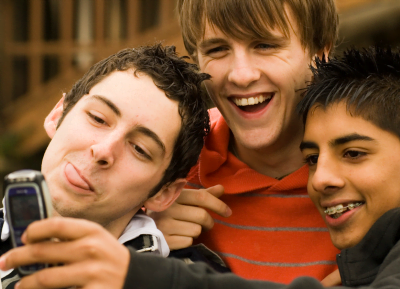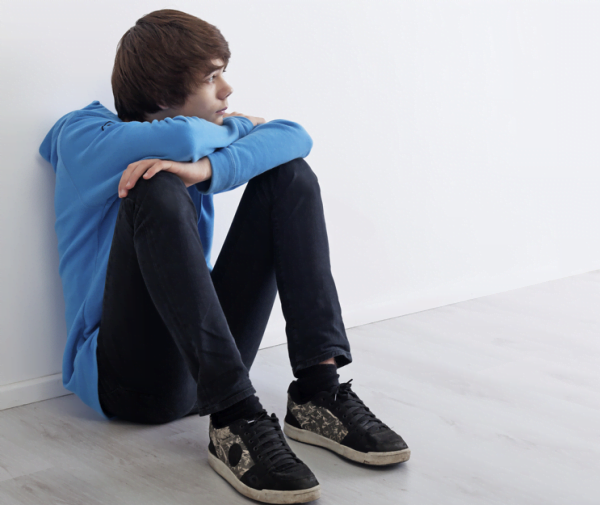Puberty Changes
When youth understand their sexual development they can build the confidence and motivation to learn skills and strategies that enhance their health. Healthy sexuality includes an understanding of how the body works and how to take care of it.

Puberty is the process of a child becoming an adult. Puberty changes are triggered by the increase in the production of hormones. It can start as early as age 8 and go until age 20. Everyone is unique and will follow the timeline set by their own body.
Most Puberty Changes Happen to Everyone
When people think about puberty, they often focus on the changes that happen to the body. Though these may be easiest to recognize, the social and emotional changes are often the changes that youth need the most help understanding and the most support coping with.
Social and Emotional Changes
These changes are triggered by both physical development of the brain and body as well as changes in socio-cultural expectations. For example, mood swings might be caused by hormone changes, but they are also affected by changing parental expectations and changes in friendships. Some social and emotional changes include:

- Wanting more independence
- Having stronger feelings of wanting to feel liked and fit in
- Friendships become more important
- Friends and friendship groups may change
- Peers and media have greater influence on values and behaviors
- Sometimes feeling lonely and confused
- Thinking more about appearance
- Becoming more self-conscious
- Mood swings
- May get crushes and become interested in having a romantic partner (boyfriend, girlfriend)
- Expectations from and about parents and school may change
- Thinking more about the future
Managing Social and Emotional Changes
Supporting youth develop skills and knowledge to manage emotional and social changes is key to healthy adolescent development. Learning these skills builds the foundation for healthy adult relationships and mental health.

It’s important to support youth build these skills to ensure healthy socio-emotional development:
-
Self-care and healthy living. Getting enough rest, good nutrition, regular exercise, avoiding substance use and adequate hydration support social and emotional health due to the connection between mind and body.
-
How to build healthy self-esteem and body image. These skills are necessary to navigate relationships, build positive mental health, engage in health promoting behaviors and resist pressures to engage in unhealthy behaviors.
-
Relationships, communication and boundaries. Learning about how to engage in mutually respectful, caring relationships and communication of all kinds creates a framework for relationships and communication in intimate, professional, family, community and friend relationships.
-
Values and identity development. This is a key developmental task of adolescence that is needed for healthy decision making and sense of self worth.
-
Emotional management and healthy thoughts. Understanding the interplay between thoughts and feelings and that they are within personal control builds resiliency to learn from challenges and barriers.
-
Safer risk taking. This is another key developmental task that builds independence, confidence and competence.
-
Connecting to community and health supports. It is important that youth learn that to maintain physical, emotional and social health, people need to be supported by a variety of natural and external supports like mentors, health care providers, spiritual leaders and counselors and how to access those supports.
Physical Changes
Physical changes often impact the social and emotional well-being of youth so healthy management is important. As with the social and emotional changes of puberty, most of the physical changes happen to everyone, regardless of their assigned sex. These changes include:

- Growing taller
- Having temporary period of increased awkwardness/clumsiness
- Voice changes
- Skin and hair getting oily
- Pimples, blackheads, acne
- Increase in the amount and courseness of body hair (legs, underarms, chest, back)
- Genital hair growth (pubic hair)
- Increase in sweating, especially feet and armpits
- Changes to body odor
- Breasts changes (may include swelling, tenderness, temporary or permanent development)
Some Physical Changes are Based on Reproductive Anatomy
People assigned male at birth will generally experience these changes in puberty:
- Increase in the amount and coarseness of facial hair
- Widening of shoulders
- Sperm production
- Penis and testicle growth
- Increase in erections, including unexpected erections
- Ejaculation of Sperm
People assigned female at birth will generally experience these changes in puberty:
- Lasting breast development
- Hip widening
- Increase in vaginal fluid
- Vaginal development
- Ovulation
- Menstruation
Managing Physical Changes
An important part of becoming an adult is understanding anatomy and physiology, acquiring hygiene skills and learning about one’s own body. These also help youth successfully manage the physical changes of puberty.
Self-Care and Screenings:
As the body matures, it becomes more important for youth to get to know what is normal for all parts of their body and where to go if they notice changes. This includes getting to know what their breasts and genitals look like and checking them regularly. It is important to see a health care provider if a person has pain, unusual discharge, foul smell, sores, irritation, lumps or other concerning symptoms.
Yearly check-ups continue to be an important part of healthy development throughout life. Puberty is a good time for parents and professionals to teach youth about:
- How to find health care services like a doctor, counselor, optometrist, and dentist.
- When and how to make an appointment.
- How to prepare for a health care appointment.
- How to ask questions and remember information at a health care appointment.
- The importance of carrying Alberta Health Care and other health insurance cards.
- How to get a copy of their Alberta Health Care card.
Skin, Hair and Body Odor Changes:
Increased sweat and oil production as well as changing hormones can cause body, skin and hair changes. For adolescents to look and feel their best, it is important that they develop a healthy hygiene routine. Click here for more information about hygiene.
Penis and Testicular Changes:
Sperm Production: During puberty, testicles grow and begin to make to sperm. Sperm is stored in the epididymis, a tube-like structure at the back of the testicles.
Penis Growth: The penis also grows during puberty and has an average size around 5” erect in adulthood. Many people wonder about penis size. Penises come in many shapes and sizes. Everyone is different, so a penis that is larger or smaller is still normal. Size isn’t related to sexual pleasure or fertility. Using pills, creams, or devices to enlarge the penis can cause serious harm and aren’t recommended for anyone, especially youth.
Erections: An erection is when the penis fills with blood and becomes hard, allowing for some types of sex. Sometimes erections happen when a person has a sexual feeling, or the genital area is touched. Sometimes they happen unexpectedly, like at school or during sports. Baggy clothes, sitting down and wearing appropriate sports equipment can all help hide an erection. Staying calm and thinking about other things can help it go away.
Ejaculation: Sometimes when a person has an erection, if they masturbate or have sex, they may ejaculate about a teaspoon of whitish fluid called semen from the penis.
Wet dreams: People often get erections at night when they are sleeping. Many people have an erection when they wake up and will have to wait for the erection to go away before they can urinate (pee). Sometimes people ejaculate when they are sleeping. This is called having a wet dream or a nocturnal emission. If semen gets on bedding or pajamas during a wet dream, it’s important to wash them the next day. Learning how to do laundry can help with this.
Vaginal, Uterine and Ovary Changes:
Vaginal fluid: When puberty starts, the vagina starts to make more vaginal fluid. This normal body process helps the body keep the vagina clean and healthy. Vaginal fluid can be clear or whitish; slippery, sticky or a bit creamy. The amount and consistency changes slightly throughout the month. It’s important to talk to a health care provider if someone notices significant changes in color, smell, amount or texture because that can be the sign of a problem. When a person is having a sexual feelings, vaginal fluid increases.
Ovulation: People are born with all the eggs they’ll ever have stored in the ovaries. During puberty, hormones trigger the ovaries to mature a few of the eggs. While this is happening, the lining of the uterus builds up with blood and tissue. Once mature, the ovaries release one or more mature eggs into the fallopian tube. This is called ovulation.
Menstruation: If the released egg is fertilized by a sperm, the fertilized egg travels to the uterus and implants into the built up lining, creating a pregnancy. If the egg isn’t fertilized, it dissolves in the fallopian tube and the uterine lining sheds and comes out the vagina. This is called having a period, or menstruation. From the first day of one period to the first day of the next is usually around 20-40 days. Each period lasts about 3-7 days. Increased vaginal discharge, breast changes and pubic hair growth mean someone is getting close to having their first period, so it’s a good idea to have a pad handy.
Having a period is a normal part of growing up. Most people feel and act the same when they have their period as when they don’t have their period. People can exercise, shower/bathe, and go to school when they have their period. If they use a tampon or menstrual cup instead of a pad, they can swim during their period.
Healthy living strategies like getting enough rest, hydration, nutrition, stress management and regular exercise can reduce uncomfortable period symptoms.
For some people, periods can be painful and more difficult to manage. Painful periods can be a sign of a problem. Talk to a health care about periods if:
- Someone has severe headaches or nausea with periods.
- Periods last more than 7 days or are very heavy (need to change pad or tampon every hour or have lots of clots).
- There’s bleeding between periods.
- A sexually active person missed a period or someone who is not sexually active. missed several or missing several periods when not sexually active.
- Someone got their first period before age 8 or not having a period by age 16.


